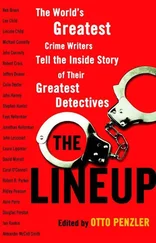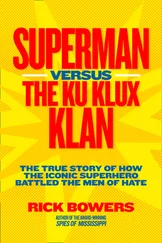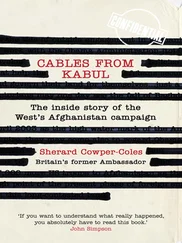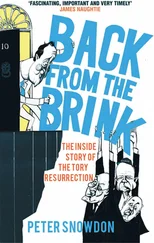Andrew Sorkin - Too Big to Fail - The Inside Story of How Wall Street and Washington Fought to Save the FinancialSystem--and Themselves
Здесь есть возможность читать онлайн «Andrew Sorkin - Too Big to Fail - The Inside Story of How Wall Street and Washington Fought to Save the FinancialSystem--and Themselves» весь текст электронной книги совершенно бесплатно (целиком полную версию без сокращений). В некоторых случаях можно слушать аудио, скачать через торрент в формате fb2 и присутствует краткое содержание. Жанр: Старинная литература, на английском языке. Описание произведения, (предисловие) а так же отзывы посетителей доступны на портале библиотеки ЛибКат.
- Название:Too Big to Fail: The Inside Story of How Wall Street and Washington Fought to Save the FinancialSystem--and Themselves
- Автор:
- Жанр:
- Год:неизвестен
- ISBN:нет данных
- Рейтинг книги:4 / 5. Голосов: 1
-
Избранное:Добавить в избранное
- Отзывы:
-
Ваша оценка:
- 80
- 1
- 2
- 3
- 4
- 5
Too Big to Fail: The Inside Story of How Wall Street and Washington Fought to Save the FinancialSystem--and Themselves: краткое содержание, описание и аннотация
Предлагаем к чтению аннотацию, описание, краткое содержание или предисловие (зависит от того, что написал сам автор книги «Too Big to Fail: The Inside Story of How Wall Street and Washington Fought to Save the FinancialSystem--and Themselves»). Если вы не нашли необходимую информацию о книге — напишите в комментариях, мы постараемся отыскать её.
Too Big to Fail: The Inside Story of How Wall Street and Washington Fought to Save the FinancialSystem--and Themselves — читать онлайн бесплатно полную книгу (весь текст) целиком
Ниже представлен текст книги, разбитый по страницам. Система сохранения места последней прочитанной страницы, позволяет с удобством читать онлайн бесплатно книгу «Too Big to Fail: The Inside Story of How Wall Street and Washington Fought to Save the FinancialSystem--and Themselves», без необходимости каждый раз заново искать на чём Вы остановились. Поставьте закладку, и сможете в любой момент перейти на страницу, на которой закончили чтение.
Интервал:
Закладка:

Despite his recent infatuation with leverage, Fuld believed in liquidity. He always had. You always needed a lot of cash on hand to ride out the storm, he would say. He liked to tell the story about how he once sat at a blackjack table and watched a “whale” of a gambler in Vegas lose $4.5 million, doubling every lost bet in hopes his luck would change. Fuld took notes on a cocktail napkin, recording the lesson he learned: “I don’t care who you are. You don’t have enough capital.”
You can never have enough .
It was a lesson he had learned again in 1998 after the hedge fund Long-Term Capital Management blew up. In the immediate aftermath, Lehman was thought to be vulnerable because of its exposure to the mammoth fund. But it survived, barely, because the firm had a cushion of extra cash—and also because Fuld aggressively fought back. That was another take-away from the Long-Term Capital fiasco: You had to kill rumors. Let them live, and they became self-fulfilling prophecies. As he fumed to the Washington Post at the time, “Each and every one of these rumors was proved to be incorrect. If SEC regulators find out who started these stories, I’d like to have fifteen minutes with them first.”
One of the people on Fuld’s callback list that morning was Susanne Craig, a hard-nosed reporter at the Wall Street Journal who had been covering Lehman for years. Fuld liked Craig and often spoke to her on “ background.” But this morning she had called trying to convince him to be interviewed on the record. She pitched it as a way for him to silence the critics, to explain all the advance planning Lehman had done. Fuld, who hated reading about himself, thought it might be a good idea to participate. He regretted the way he had handled the media during the Long-Term Capital crisis. He wished he’d been more proactive from the start. “I want to do it right this time,” he told her.
By noon, Fuld and his lieutenants had formulated a plan: They would give interviews to the Wall Street Journal, the Financial Times , and Barron’s . They’d provide a little ticktock and color to Craig, about what was going on inside the firm, in the hopes that her editors would splash the story on the front page. They set up back-to-back sessions with the reporters starting at 3:00 p.m. The talking points were clear: The rumors were bogus. Lehman had ample liquidity, right up there with Goldman Sachs and Morgan Stanley. If the firm did need to make a payout, it was good for the money.
For the interview with Craig, Fuld was joined in a conference call by Gregory, Russo, and Erin Callan, the company’s new chief financial officer. “We learned we need a lot of liquidity and we also know we need to deal with rumors as they arise, not long after,” Fuld told the reporter. He also stressed the fact that, with the Fed window now open, Lehman was on much stronger footing: “People are betting that the Fed can’t stabilize the market, and I don’t think that is a very good bet.”
“We have liquidity,” Gregory reiterated. “But while we don’t need it right now, having it there alone sends a strong message about liquidity and its availability to everybody in the market.” That remark skirted the catch-22 involved with the Fed’s decision to make cheap loans available to firms like Lehman: Using it would be an admission of weakness, and no bank wanted to risk that. In fact, the Fed’s move was intended more to reassure investors than to shore up banks. (Ironically, one of Lehman’s own executives, Russo, could take partial credit for the strategy, as he had suggested it in a white paper he presented in Davos, Switzerland, at the annual capitalist ball known as the World Economic Forum, just two months earlier. Timothy F. Geithner, the president of the Federal Reserve Bank of New York, had been in the audience.)
After wrapping up the interview, Gregory and Callan returned to their offices and worked the phones, calling hedge funds that were rumored to be scaling back their trading with Lehman and doing everything they could to keep them on board.
The blitz paid off: In the last hour of trading, Lehman’s stock made a U-turn: After falling nearly 50 percent earlier in the day, it closed down at only 19 percent, at $31.75. It was now at a four-and-half-year low, the gains of the boom years erased in a single day. But the executives were pleased with their efforts. Tomorrow they would release their earnings, and maybe that would keep the good momentum going. Callan would be walking investors through the report in a conference call, and she went back to Gregory’s office to rehearse her lines.
Exhausted, Fuld got into his car to head back home and get a good night’s sleep. Once again he found himself wishing that the renovations on the sixteen-room, full-floor apartment he and Kathy bought at 640 Park Avenue for $21 million were finished, but Kathy had decided to gut it. He settled into the backseat of the Mercedes, put down his BlackBerry, and enjoyed a few minutes of respite from the world.

No one would ever have voted Dick Fuld the most likely to rise to such levels on Wall Street.
As a freshman at the University of Colorado at Boulder in 1964, he seemed lost, struggling academically and unable to decide on a major. Looking for answers, he joined the Reserve Officers’ Training Corps, the college-based, officer-commissioning program.
One morning during ROTC training, the commanding officer, a university senior, lined up all the students in the huge university quadrangle for a routine inspection.
“Fuld, your shoes aren’t shined,” the officer barked.
“Yes they are, sir,” he began to answer. But before he could get the words out of his mouth, the officer stomped on Fuld’s left shoe and sullied it. He ordered Fuld to go back to the dorm and shine it, which he did without complaint. When Fuld returned, the officer then stepped on his right foot—and again sent him back to the dorm.
By the time Fuld returned, the officer had turned his attention to the next person in line, a diminutive student. He placed his heavy army-issue boot on the young man’s ankle and pressed hard, causing him to fall to the ground and cry out in pain. For good measure he thrust his knee in the boy’s face, breaking his eyeglasses.
Fuld didn’t know his classmate, but he had seen enough.
“Hey, asshole,” he said to the commanding officer. “Why don’t you pick on someone your own size?”
“Are you talking to me?” the senior asked, stepping up to within inches of Fuld’s face.
“Yes,” Fuld shot back without hesitation.
They soon came to blows, and in the end, both Fuld and the officer lay bloodied on the floor after other cadets had separated them. The eighteen-year-old Fuld was promptly hauled in front of the head of the ROTC program at the university and informed that he was being expelled. “You got into a fight with your commanding officer,” an ROTC official told him. “That’s not behavior becoming of a cadet.”
“I understand that, sir, but I’d like you to hear my side of the story,” Fuld protested. “You have to understand what happened.”
“No, there’s only one side to the story. You got into a fight with your commanding officer. That’s all that matters. I can’t have you in the program.”
The ROTC was only the latest in a series of disappointments for Fuld, but it was also a sign that he was slowly coming into his own.
Читать дальшеИнтервал:
Закладка:
Похожие книги на «Too Big to Fail: The Inside Story of How Wall Street and Washington Fought to Save the FinancialSystem--and Themselves»
Представляем Вашему вниманию похожие книги на «Too Big to Fail: The Inside Story of How Wall Street and Washington Fought to Save the FinancialSystem--and Themselves» списком для выбора. Мы отобрали схожую по названию и смыслу литературу в надежде предоставить читателям больше вариантов отыскать новые, интересные, ещё непрочитанные произведения.
Обсуждение, отзывы о книге «Too Big to Fail: The Inside Story of How Wall Street and Washington Fought to Save the FinancialSystem--and Themselves» и просто собственные мнения читателей. Оставьте ваши комментарии, напишите, что Вы думаете о произведении, его смысле или главных героях. Укажите что конкретно понравилось, а что нет, и почему Вы так считаете.












